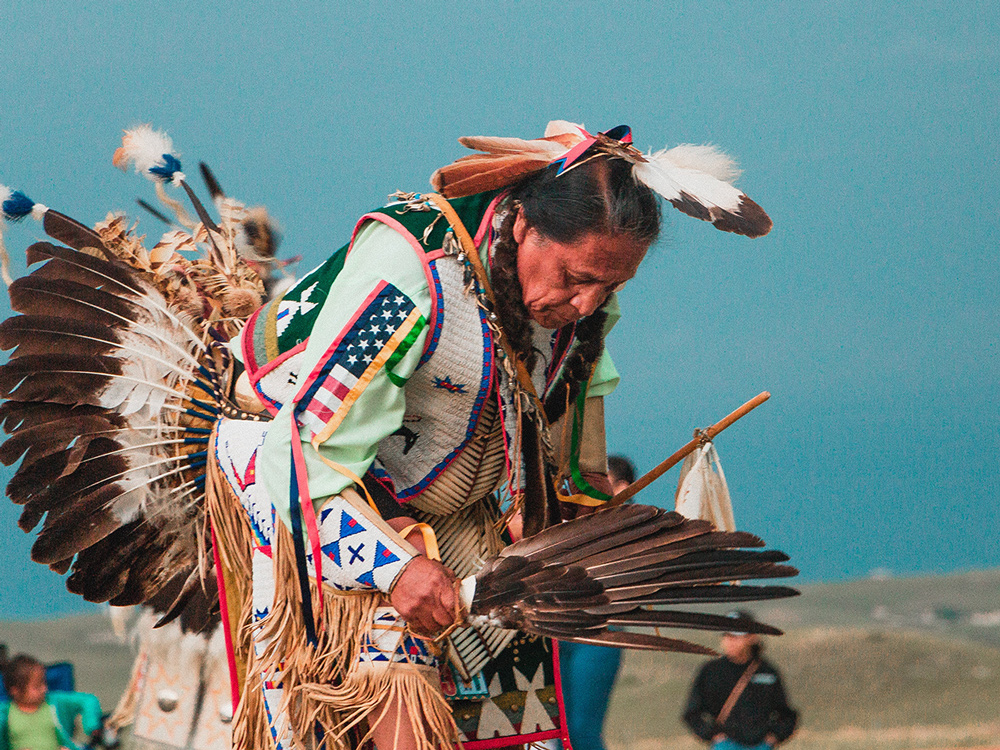
Nonprofit Quarterly
Steve Dubb
May 1, 2022
The climate crisis is not only a product of greenhouse gas emissions… but also of an ideological shift that was imposed by colonization and capitalism to justify violation of sacred land-, water-, and airways—domination that taught Americans to speak of “resources” instead of “relatives.” – Ruth Miller, Meda Dewitt, and Margi Dashevsky, Nonprofit Quarterly, 2021
To understand Native land stewardship, it is important to recognize that it occurs within a context of repairing the ravages of colonialism. A new report, Models of Historic Tribal Land Stewardship in the Northern Great Plains, published by the First Nations Development Institute and authored by Mary Adelzadeh, examines these themes as it highlights efforts by four Native nations in Montana and South Dakota to restore stewardship principles to land management.
The report offers some lessons learned from a project, “Mapping Ecological Stewardship Opportunities,” which was supported by Margaret A. Cargill Philanthropies. The resources involved were modest ($240,000 total), but the ambition was large—namely, to assist Native nations to “regain control of their land and natural resources, revitalize traditional stewardship practices, and build sustainable stewardship initiatives that contribute to tribal economic and community development opportunities” (5).
The costs of resource extraction for Native American communities are hard to overstate. To take just one example, between 1944 and 1986, nearly 30 million tons of radioactive uranium ore were mined from Navajo lands, leading to elevated levels of birth defects, kidney failure, and cancer in Navajo communities. Testifying to Congress in 2019, Navajo President Jonathan Nez noted that “prior to uranium mining, the Navajo people were virtually cancer free with the lowest lung cancer rate of all Native American nations. Today, cancer is the second leading cause of mortality among the Navajo people. Cancer rates doubled on the Navajo Nation from the 1970s to the 1990s.”
There is a deep irony in this situation, as the climate emergency’s effects fall on those least responsible for their occurrence. Indeed, the principles of resource stewardship long championed in many Native American communities are critical to restoring environmental balance. For example, as fire archaeologist Hillary Renick has noted in NPQ, as mass wildfires fueled by the climate crisis become increasingly common, “there is widespread scientific acknowledgement that Indigenous fire ecology practices are both appropriate and environmentally necessary.” Still, she adds, “fire ecology efforts must deal with the legacy of a century of fire ecology mismanagement, a challenge that has been greatly exacerbated by climate change.”
Two years ago, Raymond Foxworth of First Nations noted in NPQ that, “Native people have long held a worldview that connects human and community health to the health of land and the environment. It shapes and perpetuates Native identities, cultures, and worldviews.” The point, Foxworth adds, is not to romanticize Native communities, but rather to learn from “a worldview that connects human and community health to the health of land and the environment.” This worldview can be summarized as one that centers the notion of stewardship, rather than resource extraction.
Read the full article at Nonprofit Quarterly.

